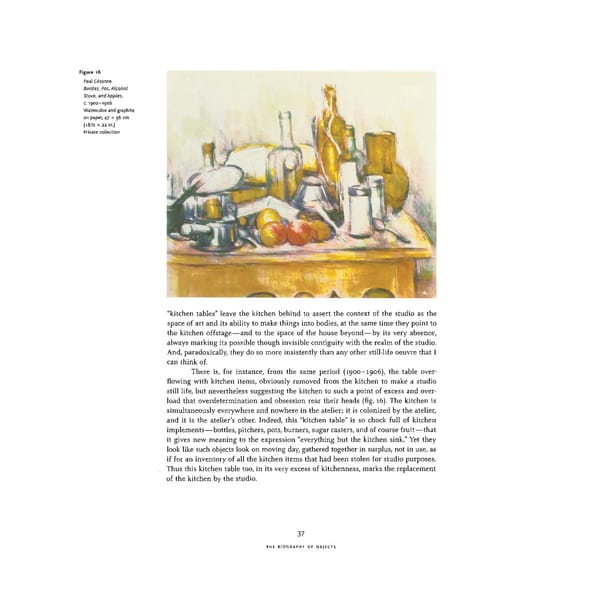Figure 16 Paul Cezanne Bottles, Pot, Alcohol Stove, and Apples, c. 1900-1906 Watercolor and graphite on paper, 47 x 56 cm (i81/z x 22 in.) Private collection "kitchen tables" leave the kitchen behind to assert the context of the studio as the space of art and its ability to make things into bodies, at the same time they point to the kitchen offstage—and to the space of the house beyond—by its very absence, always marking its possible though invisible contiguity with the realm of the studio. And, paradoxically, they do so more insistently than any other still-life oeuvre that I can think of. There is, for instance, from the same period (1900-1906), the table over- flowing with kitchen items, obviously removed from the kitchen to make a studio still life, but nevertheless suggesting the kitchen to such a point of excess and over- load that overdetermination and obsession rear their heads (fig. 16). The kitchen is simultaneously everywhere and nowhere in the atelier; it is colonized by the atelier, and it is the atelier's other. Indeed, this "kitchen table" is so chock full of kitchen implements—bottles, pitchers, pots, burners, sugar casters, and of course fruit—that it gives new meaning to the expression "everything but the kitchen sink." Yet they look like such objects look on moving day, gathered together in surplus, not in use, as if for an inventory of all the kitchen items that had been stolen for studio purposes. Thus this kitchen table too, in its very excess of kitchenness, marks the replacement of the kitchen by the studio. 37 THE BIOGRAPHY OF OBJECTS
 Cézanne in the Studio: Still Life in Watercolors Page 51 Page 53
Cézanne in the Studio: Still Life in Watercolors Page 51 Page 53